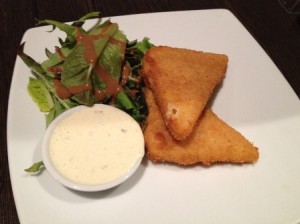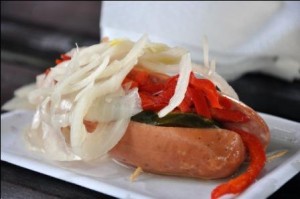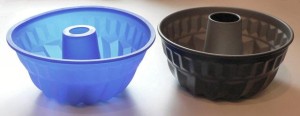Czech cuisine is famous for its varieties of meat, which plays the main role on a plate, and further for the variety of delicious sauces, dumplings and soups.
Local tastes
As in every country , the traditional cuisine of the Czech Republic is given by its location, its climate and crops which find favourable conditions in this area. It is no wonder then that in this moderate climate with large water areas, many rivers and forests the typical meals consist of field crops, vegetables and game. The Czech cuisine is also rich in mushrooms, for the Czechs are quite keen mushroom pickers and the climate in this country, as well as in the most Central Europe, is just perfect for growth of mushrooms. When it comes to desserts then, the Czech land is rich in many kinds of pulp fruit and berries used in cakes together with curd cheese, walnut and poppy seed. One of the main characteristics of Czech cuisine is that the meal usually consists of a soup and a main course. The soup has quite often a form of broth with various ingredients, mostly vegetables according to the season, and pastinas. Thickened soups are also very common and traditional way of preparation. As a thickener the Czechs usually use roux of flour and the most typical ingredients are legumes, sausages or giblets. This kind of soup can be served as a main course with bread. Traditional soups include for example the potato soup, bean soup, lentil soup, cabbage soup, mushroom soup, fish soup – which many households hold for their traditional Christmas soup, and so on. Another typical feature of Czech cuisine is meat, the Czechs hardly pass a day without a proper portion of meat for lunch. Traditional meat on a Czech table is pork, poultry, beef, fish. Veal and mutton are rarer in use and in regions with gamekeeping tradition it is not a problem, in certain seasons, to have a nice boar or roe deer noisette. On festive occasions, the Czechs mostly relish roast mallard or goose with cabbage and dumplings. As you can see, the range is pretty wide. The ways of preparation, on the other hand, are to a certain extent alike. It is mostly roasting or frying – as our favourite schnitzel or anything covered with breadcrumbs or as the typical and almost legendary Czech fried cheese.
, the traditional cuisine of the Czech Republic is given by its location, its climate and crops which find favourable conditions in this area. It is no wonder then that in this moderate climate with large water areas, many rivers and forests the typical meals consist of field crops, vegetables and game. The Czech cuisine is also rich in mushrooms, for the Czechs are quite keen mushroom pickers and the climate in this country, as well as in the most Central Europe, is just perfect for growth of mushrooms. When it comes to desserts then, the Czech land is rich in many kinds of pulp fruit and berries used in cakes together with curd cheese, walnut and poppy seed. One of the main characteristics of Czech cuisine is that the meal usually consists of a soup and a main course. The soup has quite often a form of broth with various ingredients, mostly vegetables according to the season, and pastinas. Thickened soups are also very common and traditional way of preparation. As a thickener the Czechs usually use roux of flour and the most typical ingredients are legumes, sausages or giblets. This kind of soup can be served as a main course with bread. Traditional soups include for example the potato soup, bean soup, lentil soup, cabbage soup, mushroom soup, fish soup – which many households hold for their traditional Christmas soup, and so on. Another typical feature of Czech cuisine is meat, the Czechs hardly pass a day without a proper portion of meat for lunch. Traditional meat on a Czech table is pork, poultry, beef, fish. Veal and mutton are rarer in use and in regions with gamekeeping tradition it is not a problem, in certain seasons, to have a nice boar or roe deer noisette. On festive occasions, the Czechs mostly relish roast mallard or goose with cabbage and dumplings. As you can see, the range is pretty wide. The ways of preparation, on the other hand, are to a certain extent alike. It is mostly roasting or frying – as our favourite schnitzel or anything covered with breadcrumbs or as the typical and almost legendary Czech fried cheese.
Sauces and side dish

What mostly comes with meat is either potatoes, which have rooted in the Czech cuisine really deeply since they were brought form the US, or the already mentioned fluffy dumplings. Czech cookery is also known for its almost excessive use of various sauces. These sauces are prepared on béchamel-like basis
and the most traditional ones are the dill sauce, tomato sauce, mushroom sauce, paprika sauce and the very favourite cream sauce which is made with root vegetable and goes so well with sirloin, lemon and cranberries. Apart from these quite heavy on flour and cream sauces, there are variants as the side dish to meat. Mostly it is vegetables such as stewed spinach or cabbage.
skyscanner.load("snippets","2");
function main(){
var snippet = new skyscanner.snippets.SearchPanelControl();
snippet.setShape("box400x400");
snippet.setCulture("en-GB");
snippet.setCurrency("USD");
snippet.setDeparture("US", false);
snippet.setDestination("CZ", false);
snippet.setColourScheme("classicbluelight");
snippet.setUrlParam("associateid", "AFF_NTW_00014_00001");
snippet.setUrlParam("pid", "7470885");
snippet.setUrlParam("aid", "10644591");
snippet.setClickUrl("http://www.jdoqocy.com/click-7470885-10644591?sid=&url=@@url@@");
snippet.draw(document.getElementById("snippet_searchpanel"));
}
skyscanner.setOnLoadCallback(main);
Snacks and desserts
In pubs you can order also small snacks with your beer. The most traditional and omnipotent ones are a pickled bratwurst called the ‘drown man’, pickled camembert-like cheese usually with a pepperoni, very often you can also have a garlic toast, and of course that it would not be a proper pub without a proper goulash, although it is originally a Hungarian meal. As a dessert you can have a strudel, which is also borrowed, from Austria this time, but has long ago found its place on Czech tables. Typical are various kinds of cakes with fruit fillings made of plums, cherries, peaches, apples, blueberries and so on; or with poppy seed, walnut, curd cheese and raisins. In Wallachia you can find more kinds in one big cake called ‘frgál’ which was included in the European Commission’s list of products with protected geographical indication quite recently.
So, as you can easily conclude, Czech cuisine is not of the healthiest ones. The amount of meat, cream based sauces, and also smoked meats and sausages, etc., makes it quite heavy but very, very rich in nutrition. Yet it has its tradition and if done really properly and well, it has its unmistakeable magic. The traditional meals can be found in almost every restaurant. It is still good, though, to find a better place to taste the real sweet smoothness of cream sauce with a slice of sirloin, good roast duck with red cabbage and bread dumplings, or a really nice mushroom soup.


 , the traditional cuisine of the Czech Republic is given by its location, its climate and crops which find favourable conditions in this area. It is no wonder then that in this moderate climate with large water areas, many rivers and forests the typical meals consist of field crops, vegetables and game. The Czech cuisine is also rich in mushrooms, for the Czechs are quite keen mushroom pickers and the climate in this country, as well as in the most Central Europe, is just perfect for growth of mushrooms. When it comes to desserts then, the Czech land is rich in many kinds of pulp fruit and berries used in cakes together with curd cheese, walnut and poppy seed. One of the main characteristics of Czech cuisine is that the meal usually consists of a soup and a main course. The soup has quite often a form of broth with various ingredients, mostly vegetables according to the season, and pastinas. Thickened soups are also very common and traditional way of preparation. As a thickener the Czechs usually use roux of flour and the most typical ingredients are legumes, sausages or giblets. This kind of soup can be served as a main course with bread. Traditional soups include for example the
, the traditional cuisine of the Czech Republic is given by its location, its climate and crops which find favourable conditions in this area. It is no wonder then that in this moderate climate with large water areas, many rivers and forests the typical meals consist of field crops, vegetables and game. The Czech cuisine is also rich in mushrooms, for the Czechs are quite keen mushroom pickers and the climate in this country, as well as in the most Central Europe, is just perfect for growth of mushrooms. When it comes to desserts then, the Czech land is rich in many kinds of pulp fruit and berries used in cakes together with curd cheese, walnut and poppy seed. One of the main characteristics of Czech cuisine is that the meal usually consists of a soup and a main course. The soup has quite often a form of broth with various ingredients, mostly vegetables according to the season, and pastinas. Thickened soups are also very common and traditional way of preparation. As a thickener the Czechs usually use roux of flour and the most typical ingredients are legumes, sausages or giblets. This kind of soup can be served as a main course with bread. Traditional soups include for example the 